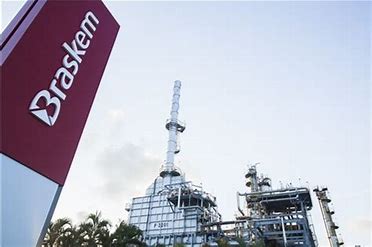Retailers and telcos will also be subject to sanctions if they have sold smartphones in the same conditions
10/14/2022
/i.s3.glbimg.com/v1/AUTH_37554604729d4b2f9f3eb9ad8a691345/internal_photos/bs/2022/w/M/BuCRITTiyxVtpAw5fI5Q/14emp-100-apple-b7-img01.jpg)
Apple filed a writ of mandamus asking the granting of injunction suspend the decision — Foto: Jeenah Moon/Bloomberg
The 18th Civil Court of São Paulo determined on Thursday that Apple will pay a fine of R$100 million for selling iPhones without a charger. And retailers and telecom operators that sold Apple phones without a charger are subject to the same penalties imposed on the manufacturer, including fines, search and seizure of devices, says Rodrigo Roca, head of the National Consumer Secretariat (Senacon) of the Ministry of Justice.
“We will start administrative proceedings against every retailer who disobeys our determination,” Mr. Roca told Valor. The lawsuit linked to the R$100 million fine was filed by the Brazilian Association of Borrowers, Consumers and Taxpayers (ABMCC). Apple will also have to deliver a charger for those who bought a model that comes without the accessory in Brazil. The court decision can be appealed.
At 6:20 pm this Thursday, Apple filed a writ of mandamus in the 20th Court of the Federal District, asking “the granting of injunction to immediately suspend any and all effects […] against Apple and its resellers”. This Friday the new iPhone 14 starts being sold in the country, without charger. The brand’s cell phones are sold without charger since 2020.
According to the Retail Development Institute (IDV), which represents 72 associated retailers, the responsibility for offering the charger lies with the manufacturer. “The industry must respond for their strategic decisions to launch products, officially offered to the market, not fitting to retail, which, as everyone knows, sells the products purchased from industry, any responsibility,” the institute said in a statement. Conexis, the organization that represents the operators, did not reply to a request for comment.
Mr. Roca pointed out that Thursday’s court decision, which mentions a provisional remedy applied by Senacon, opens an important milestone in the judiciary’s perception of the issue. “Apple has already been the target of previous administrative sanctions coming from [Consumer-protection watchdog] Procon in São Paulo, Rio de Janeiro and Fortaleza, including million-dollar fines, but it continues in the infringing practice,” Mr. Roca said. “And there is no news of payment of fines so far.”
In early September, the Ministry of Justice determined the suspension of the sales of all iPhone models without charger and imposed a fine of more than R$12.2 million to Apple, in a decision published in the Daily Gazette on September 6. On September 12, Senacon sent administrative notices to Apple product resellers informing them of the penalties related to selling the device without the accessory considered essential to the operation of the devices.
For Mr. Roca, the argument that the charger removal follows a sustainable manufacturers’ agenda is flawed and overdue. “If the charger harms the environment, the initiative is 12 years overdue because no one gave massive warning in a campaign about conscious disposal of these items.”
Mr. Roca notes that the Ministry of Justice’s determination is not restricted to smartphones. “No device can be sold without items essential to its operation.”
The sale of smartphones without wall chargers is not exclusive to Apple. In October last year the Ministry of Justice notified Samsung and Apple again for non-compliance with an administrative decision made in 2020 on the subject.
Some Samsung devices, such as the Galaxy S22 line, launched earlier this year, are sold without a charger in Brazil. However, the manufacturer offers a free charger to consumers who wish it.
“We reinforce that the company always offers the consumer the option to redeem the charger, free of charge, when the product does not bring the accessory inside the box,” the manufacturer stated.
The compatibility of electric and electronic equipment chargers is also a concern in Europe. On October 4, the European Parliament approved legislation that standardizes the charging ports for cell phones and electronic equipment sold in the countries of the European Union. The measure adopts USB-C as the standard charging port in the European bloc and will force Apple, for example, to modify its iPhones, which currently use Lightning connector. By the end of 2024, all cell phones, tablets, and cameras sold in the bloc must have the USB-C standard. Laptops must be adapted by the end of 2026.
At the end of June, telecoms regulator Anatel opened a public consultation in order to define technical requirements for the standardization of wired smartphone chargers to the USB-C port.
*By Daniela Braun — São Paulo
Source: Valor International

/i.s3.glbimg.com/v1/AUTH_37554604729d4b2f9f3eb9ad8a691345/internal_photos/bs/2022/i/H/5881eUThGJnrro1YVKeA/14agr-100-floresta-b10-img01.jpg)
/i.s3.glbimg.com/v1/AUTH_37554604729d4b2f9f3eb9ad8a691345/internal_photos/bs/2022/h/W/k9VA93RYKuBHrFtvFATA/24bra-100-bmacro-a4-img02.jpg)



/i.s3.glbimg.com/v1/AUTH_37554604729d4b2f9f3eb9ad8a691345/internal_photos/bs/2021/b/B/BNE4NpQIqvxfSq57ZbAA/22emp-100-bala-b1-img01.jpg)
/i.s3.glbimg.com/v1/AUTH_37554604729d4b2f9f3eb9ad8a691345/internal_photos/bs/2022/a/q/emRzBtRoidrrzYMseFzw/vitale.jpg)
/i.s3.glbimg.com/v1/AUTH_37554604729d4b2f9f3eb9ad8a691345/internal_photos/bs/2022/F/k/xHiBvLTzAILLlCa4C4Aw/11agr-200-robo-b7-img01.jpg)
/i.s3.glbimg.com/v1/AUTH_37554604729d4b2f9f3eb9ad8a691345/internal_photos/bs/2021/d/u/dUm8CFT8GbJpjwStl1AA/54649968-eco-brasilia-bsb-df-04-04-2016-banco-central-na-foto-sede-do-banco-central-do-brasi.jpg)